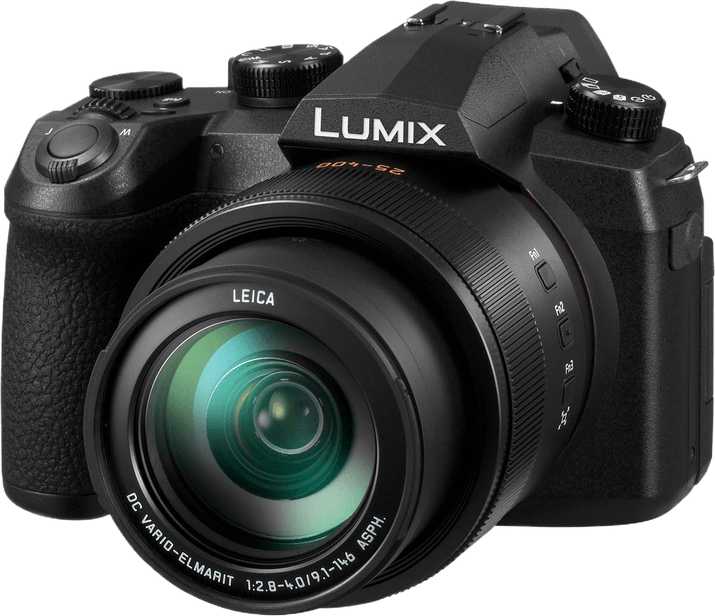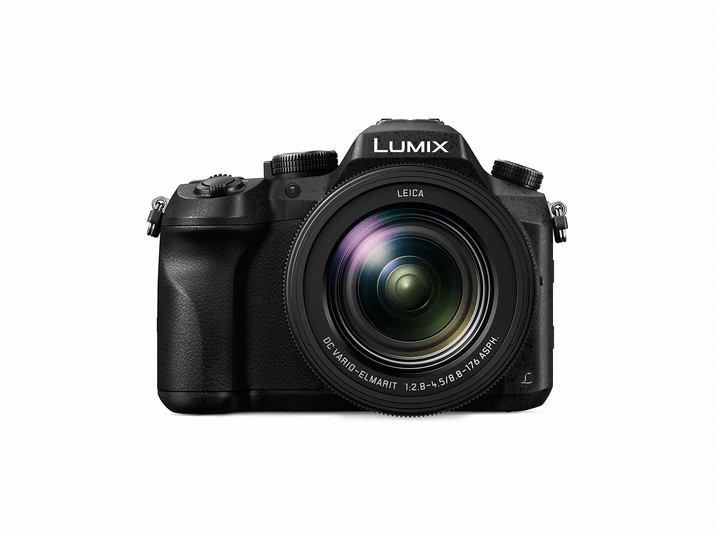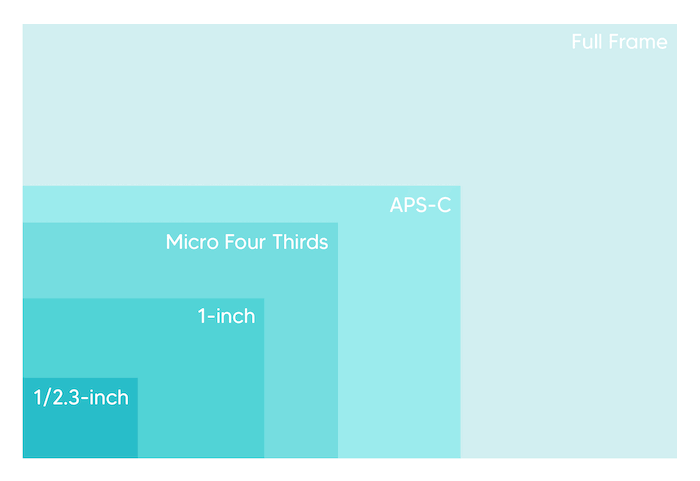Bridge cameras (superzooms) are great for people who don’t want to spend so much on DSLRs. Or it’s for those who want more control and features than a compact camera can offer.
With smartphone cameras improving constantly, there are fewer bridge cameras out there. But we’ve found eight great choices for you.
Our top pick is the Panasonic Lumix FZ80. It offers great value for your money, a telephoto lens beyond anything a smartphone can do, and 4K video!


What Is the Best Bridge Camera?
My first camera was a bridge camera—the Sony Cyber-shot DSC-HX200V. I bought it for my very first African safari in 2013. It was much cheaper than a DSLR and the best bridge camera on the market.
It had the highest-resolution sensor of 18 MP (megapixels). And it has one of the most powerful zoom lenses (27-810mm). Now this camera doesn’t even make it on our list…
We’ll look at our choices in some detail. But first, here’s a summary of our recommendations and why we like them. And if you have questions about bridge cameras, go to our FAQ section at the end.

- Huge 60x zoom
- Max 1200 mm focal length
- Touchscreen
- 4K video

- 24-600 mm zoom
- 315 autofocus points
- Max 24 fps burst shooting
- 4K video

- Super quality Leica lens
- Fast constant f/2.8 lens
- Lens stabilization
- 4K video

- Large 20.3 MP sensor
- Light and compact body shape
- Webcam capability
- 4K video and time-lapse

- Extraordinary 125x zoom
- Minimum focus distance of 1 cm
- In-body image stabilization
- 4K video

- Super quality Leica lens
- Highs-peed burst mode up to 50 fps
- Built-in 5-axis image stabilization
- 4K video

- Super quality Leica lens
- Great ergonomics with a chunky grip
- Built-in 5-axis image stabilization
- 4k video

- Great value
- Huge 40x zoom
- Built-in image stabilization
- Works with Nikon SnapBridge app
8 Best Bridge Cameras In Detail
Now let’s dive in and see what’s so good about these cameras. Let’s start with our top pick!
1. Lumix FZ80 (FZ82)

| Brand |
Brand
Panasonic
|
| Released |
Released
2017
|
| Sensor Format |
Sensor Format
|
| Megapixels |
Megapixels
18 MP |
| In-body Stabilization |
In-body Stabilization
|
| Autofocus Points |
Autofocus Points
49 |
| Maximum ISO (Native) |
Maximum ISO (Native)
3,200 |
| Frame Rate |
Frame Rate
10 fps |
| Max Video Resolution |
Max Video Resolution
|
| Max Video Frame Rate |
Max Video Frame Rate
60 p
|
| Screen Size |
Screen Size
|
| Best For |
Best For
People on a tight budget who want to move beyond their phones
|
You can’t beat the zoom range of the Nikon Coolpix P1000 or P950. But the Panasonic Lumix FZ80 (FZ82 outside the US) is a good value alternative.
It has the same one-cm focus distance but a higher-resolution sensor (18.1 MP). And it has a wider starting point to the zoom range (20 mm) if you’re shooting landscapes or indoors.
It also offers TouchPad AF (autofocus) and a Depth From Defocus system with rapid focusing speeds of 0.09 seconds!
Plus, it features 4K video with a Live Cropping mode. This allows you to produce 20-second or 40-second Full HD 1080p clips using pan and zoom.
All you set is your start and end points using the rectangle that appears on the screen. And the camera does the rest!
Another cool feature of the Lumix FZ80 is the 4K Photo mode. Normally, the max frame rate is only 10 fps (frames per second).
But you can choose the best frame from a 4K video clip using the joystick or four-way controller. The image will only be 8.3 MP. But that’s still enough to create a print 11 x 8.3 inches at 300 dpi.
2. Cyber-shot RX10 IV

| Brand |
Brand
Sony
|
| Released |
Released
2017
|
| Sensor Format |
Sensor Format
|
| Megapixels |
Megapixels
20 MP |
| In-body Stabilization |
In-body Stabilization
|
| Autofocus Points |
Autofocus Points
315 |
| Maximum ISO (Native) |
Maximum ISO (Native)
12,800 |
| Frame Rate |
Frame Rate
24 fps |
| Max Video Resolution |
Max Video Resolution
|
| Max Video Frame Rate |
Max Video Frame Rate
120 p
|
| Screen Size |
Screen Size
|
| Best For |
Best For
Wildlife and sports photography
|
Are you looking for the best overall wildlife, sports, or action camera and have a little more money to spend? Consider the Sony Cyber-shot RX10 IV.
The new version has a touchscreen and a new 315-point phase-detection AF system. It halves the focus acquisition time and makes for excellent subject tracking.
The RX10 IV can also shoot in RAW and take 4K video clips (3840 x 2160 pixels) at 30 fps. You can also capture 8 MP stills from these, a feature similar to Panasonic’s 4K Photo mode.
The 24-600mm (25x) zoom range is not the biggest of these cameras. But the variable aperture of f/2.4 to f/4 gives it the fastest lens. And the 24 fps continuous shooting speed is the best in class!
3. Lumix FZ300 (FZ330)

| Brand |
Brand
Panasonic
|
| Released |
Released
2015
|
| Sensor Format |
Sensor Format
|
| Megapixels |
Megapixels
12 MP |
| In-body Stabilization |
In-body Stabilization
|
| Autofocus Points |
Autofocus Points
1 |
| Maximum ISO (Native) |
Maximum ISO (Native)
6,400 |
| Frame Rate |
Frame Rate
12 fps |
| Max Video Resolution |
Max Video Resolution
|
| Max Video Frame Rate |
Max Video Frame Rate
60 p
|
| Screen Size |
Screen Size
|
| Best For |
Best For
Getting close to the action
|
The Panasonic Lumix FZ300 is the update to the popular FZ500 (FZ200). But it keeps the same 12 MP sensor and 25-600mm (24x) f/2.8 lens—which is very fast for a superzoom.
The resolution might seem low, but the advantage of limiting the megapixels is a marked reduction in image noise. Photo quality also doesn’t deteriorate much, even when fully zoomed in.
This version has some differences. Some of the main improvements are a new image processor, five-axis image stabilization, and weather sealing.
But it also boasts a new high-resolution electronic viewfinder (EVF) and a tilting touchscreen. And built-in Wi-Fi is another welcome addition.
It also offers excellent 4K video. And this comes with a 4K Photo mode for grabbing 8 MP stills.
The only difference between the European FZ330 and the American FZ300 is the video frame rates, which are 25 vs 50 fps and 30 vs 60 fps, respectively.
4. PowerShot SX70 HS

| Brand |
Brand
Canon
|
| Released |
Released
2018
|
| Sensor Format |
Sensor Format
|
| Megapixels |
Megapixels
20 MP |
| In-body Stabilization |
In-body Stabilization
|
| Autofocus Points |
Autofocus Points
9 |
| Maximum ISO (Native) |
Maximum ISO (Native)
3,200 |
| Frame Rate |
Frame Rate
10 fps |
| Max Video Resolution |
Max Video Resolution
|
| Max Video Frame Rate |
Max Video Frame Rate
120 p
|
| Screen Size |
Screen Size
|
| Best For |
Best For
Wildlife photography with good light
|
The Canon Powershot SX70 HS is a compact, affordable bridge camera with a 21-1365mm (65x) zoom range. It has a 20.3 MP sensor, a three-inch vari-angle screen, and simple menus and controls.
The image quality is pretty good, with an impressive dynamic range for a bridge camera. The AF system deals well with moving objects. And it also has Bluetooth and Wi-Fi connections.
But the f/3.4 to f/6.5 lens doesn’t cope well in the dark. And the 10 fps max continuous shooting rate drops to 5.7 fps with continuous autofocus.
The SX70 HS also has no built-in GPS, 4K video is only possible with a crop, and the screen isn’t touch-sensitive.
5. Coolpix P1000

| Brand |
Brand
Nikon
|
| Released |
Released
2018
|
| Sensor Format |
Sensor Format
|
| Megapixels |
Megapixels
16 MP |
| In-body Stabilization |
In-body Stabilization
|
| Autofocus Points |
Autofocus Points
1 |
| Maximum ISO (Native) |
Maximum ISO (Native)
6,400 |
| Frame Rate |
Frame Rate
7 fps |
| Max Video Resolution |
Max Video Resolution
|
| Max Video Frame Rate |
Max Video Frame Rate
60 p
|
| Screen Size |
Screen Size
|
| Best For |
Best For
People who need an extreme telephoto
|
The Nikon Coolpix P1000 and the very similar P950 take the idea of the superzoom to the very limit. You can take your pick when it comes to these two.
If you want a massive zoom range, go for the P1000. But if that’s too bulky, the P950 still has a 24-2000mm optical zoom lens. With the 166x Dynamic Fine Zoom, you can extend it digitally to 4000mm!
Both cameras indeed lose sharpness when fully zoomed in. That’s partly because of their small sensors and camera shake at such long focal lengths.
It’s also true that the widest aperture on the P950 drops from f/2.8 to f/6.5 when fully zoomed in. But you get 16 MP RAW images with a frame rate of 7 fps (up to 10 frames).
You also have a one-centimeter focus distance for macro work and a 2.36M-dot EVF. Plus, you can also shoot 4K videos with the Coolpix P1000. And that’s not at all bad at this price!
6. Lumix FZ1000 II

| Brand |
Brand
Panasonic
|
| Released |
Released
2019
|
| Sensor Format |
Sensor Format
|
| Megapixels |
Megapixels
20 MP |
| In-body Stabilization |
In-body Stabilization
|
| Autofocus Points |
Autofocus Points
49 |
| Maximum ISO (Native) |
Maximum ISO (Native)
12,800 |
| Frame Rate |
Frame Rate
12 fps |
| Max Video Resolution |
Max Video Resolution
|
| Max Video Frame Rate |
Max Video Frame Rate
60 p
|
| Screen Size |
Screen Size
|
| Best For |
Best For
Sports photography and video
|
This Panasonic Lumix FZ1000 II might be for you if you’re not worried about having a long focal length. The zoom range is only 25-400mm (16x).
But the 20.1 MP sensor provides great RAW photos. And the fast aperture of f/2.8 to f/4 helps in low-light situations.
It also has five-axis Power OIS (Optical Image Stabilization), Wi-Fi, and NFC. And it has a three-inch vari-angle LCD screen.
The FZ1000 II is capable of shooting 4K video. And there are three burst modes. You can shoot at 7 fps (continuous AF), 12 fps (single AF), and 30 fps (in 4K Photo mode).
7. Lumix FZ2500 (FZ2000)

| Brand |
Brand
Panasonic
|
| Released |
Released
2016
|
| Sensor Format |
Sensor Format
|
| Megapixels |
Megapixels
20 MP |
| In-body Stabilization |
In-body Stabilization
|
| Autofocus Points |
Autofocus Points
49 |
| Maximum ISO (Native) |
Maximum ISO (Native)
12,800 |
| Frame Rate |
Frame Rate
12 fps |
| Max Video Resolution |
Max Video Resolution
|
| Max Video Frame Rate |
Max Video Frame Rate
60 p
|
| Screen Size |
Screen Size
|
| Best For |
Best For
Sports photography with good light
|
The Panasonic Lumix FZ2500 (or FZ2000 in Europe) is more expensive than the FZ1000 II. Yet it also offers a step up in performance.
You get the same 20.1 MP sensor with RAW file capture but slightly more reach with the 24-480mm (20x) zoom. This comes at the cost of a slightly narrower aperture of f/2.8-4.5.
You also have a variable neutral density filter and effective subject tracking. And it has touchscreen control and an EVF with slightly higher magnification.
The only problems are that it’s not weather-sealed. And JPEG images suffer from too much noise reduction and clipped highlights.
In terms of video recording, you get DCI (cinema quality) 4K video (4096 x 2160 px) at 60 fps. Plus, the FZ2500 comes with various sound level settings and even a wind noise filter!
8. Coolpix B500

| Brand |
Brand
Nikon
|
| Released |
Released
2016
|
| Sensor Format |
Sensor Format
|
| Megapixels |
Megapixels
16 MP |
| In-body Stabilization |
In-body Stabilization
|
| Autofocus Points |
Autofocus Points
1 |
| Maximum ISO (Native) |
Maximum ISO (Native)
6,400 |
| Frame Rate |
Frame Rate
7 fps |
| Max Video Resolution |
Max Video Resolution
|
| Max Video Frame Rate |
Max Video Frame Rate
60 p
|
| Screen Size |
Screen Size
|
| Best For |
Best For
Photographers looking for good specs on a tight budget
|
This Nikon Coolpix B500 is the best option if you’re looking for the best budget bridge camera. Nikon has discontinued the B600 and B700. But the B500 has the same 16 MP sensor.
II only has a 22.5-900 mm f/3 to f/6.5 lens. So you’ll miss out on the 1440 mm max focal length of the other two models.
But a 40x zoom range is still pretty good. Plus, the B500’s list of features means it offers excellent value. On the other hand, it doesn’t support RAW files, and you can’t shoot 4K video.
Plus, there’s no electronic viewfinder (EVF). And the image quality is no better than expected at this bargain bridge camera price.
Bridge Camera Buying Guide (FAQs)
These are frequently asked questions about bridge cameras (superzooms). We hope our answers help you in your buying decisions.
What Is a Bridge Camera?
A bridge camera “bridges the gap” between compact cameras and DSLRs (or mirrorless cameras). And that was what I was trying to do with my first camera.
A superzoom is often a staging point for buying an interchangeable lens camera with an APS-C or full frame sensor. The other point about bridge cameras is that they occupy a particular niche.
Is It Worth Getting a Bridge Camera?
Yes, they offer good value and an exceptional zoom range. So they’re perfect for those looking for a budget camera with a powerful zoom.
And it’s nice to have a fixed-lens camera that does the job of a DSLR and two or three different lenses. So it’s perfect for those who don’t want to carry a heavy bag of lenses!

What Are the Limitations of a Bridge Camera?
The basic trade-off in finding the best bridge camera is between zoom range and high-quality images.
So you must ask yourself what you want to do with your photos. Their small sensor size is unimportant if you only want to publish them on Instagram. But it might be an issue if you want to print them out.
They’re also bulkier than compact cameras. And they can’t match the image quality of low-light cameras, APS-C, or full frame cameras because of their smaller sensors.
What Are the Sensor Area Sizes of Bridge Cameras?
A superzoom has two sensor sizes:
- 1/2.3-inch sensors (6.17 x 4.55 mm)
- One-inch sensors (13.2 x 8.8 mm)
But this is a bit confusing. How can a fraction have 2.3 on the bottom? And why isn’t a one-inch sensor one-inch wide or long?
The answer is that those measurements refer to the external diameter of the cathode-ray tubes used in broadcast cameras.
The “sensitive area” of the tube is usually around two-thirds of the diameter. This gives us the diagonal of the one-inch sensor. It is 0.63 inches (15.9 mm)—or roughly two-thirds of an inch.
Technology has changed now. And what matters is the area size of the sensors.
The greater the sensor area is, the greater its light-collecting power. This means better image quality, dynamic range, and low-light capability.
How Do Bridge Camera Sensors and Full Frame Sensors Compare?
You might be in for a bit of a shock when we compare bridge camera sensors to full frame ones that are 24 x 36 mm:
- A one-inch sensor is only around one-eighth the size of a full frame sensor (116 mm² v 864 mm²).
- A 1/2.3-inch sensor is only around one-thirtieth the size (28mm² v 864mm²)!
The small sensor size might completely put you off bridge cameras. After all, what good is a VW Beetle compared to a Rolls-Royce?
But a bridge camera’s zoom lens is the big selling point. As long as you do not intend to put your pictures up on the walls of a gallery, there’s still plenty to appreciate.
Most bridge cameras, for example, can shoot 4K video. And a couple of Sony bridge cameras even offer eye detection. That’s not bad for the money you spend!

Conclusion: Best Bridge Cameras
If you’re looking for the best bridge camera, your first job is to decide how important image quality is to you. That’s largely dependent on sensor size.
If you’re more worried about posting images to social media than printing them out, a small-sensor superzoom with a massive zoom range will suit your needs perfectly.
Try the Nikon Coolpix P1000 or P950. On the other hand, if you want to make the most of a long zoom lens and prefer sharper images, try one of the Panasonic bridge cameras.
If you don’t mind spending more, the best superzoom camera may be the Sony RX10 IV. But our top pick is the Panasonic Lumix FZ80. It blends affordability with features your phone can’t match!


